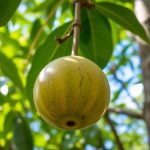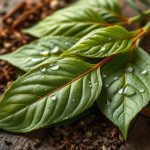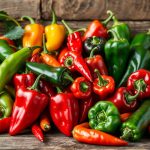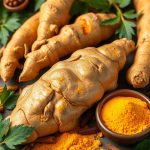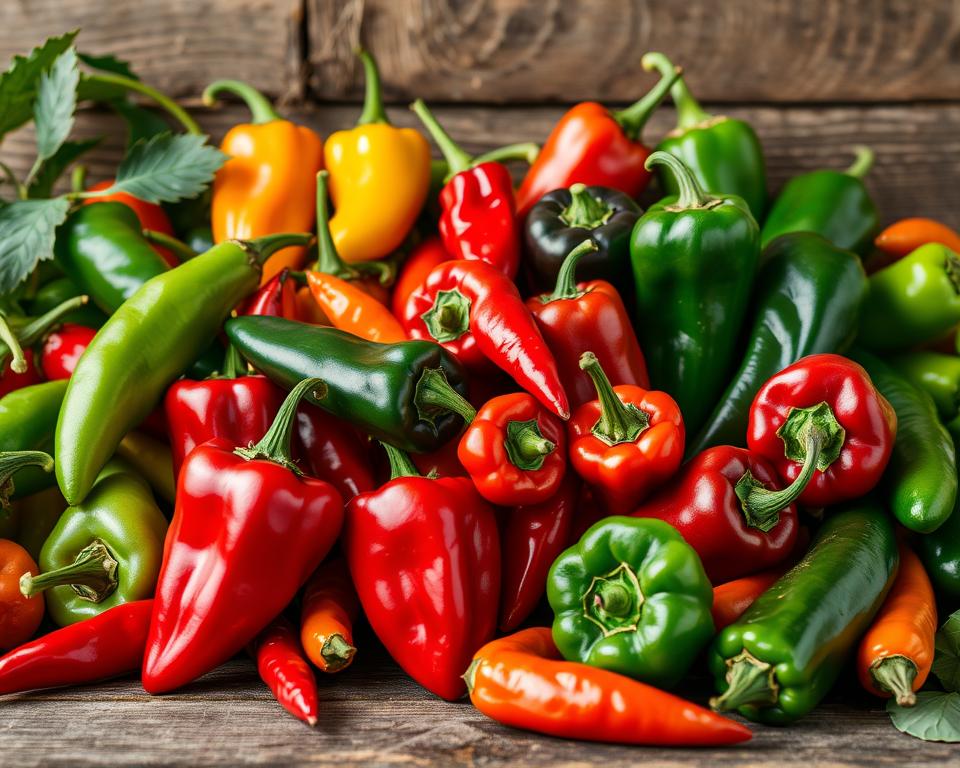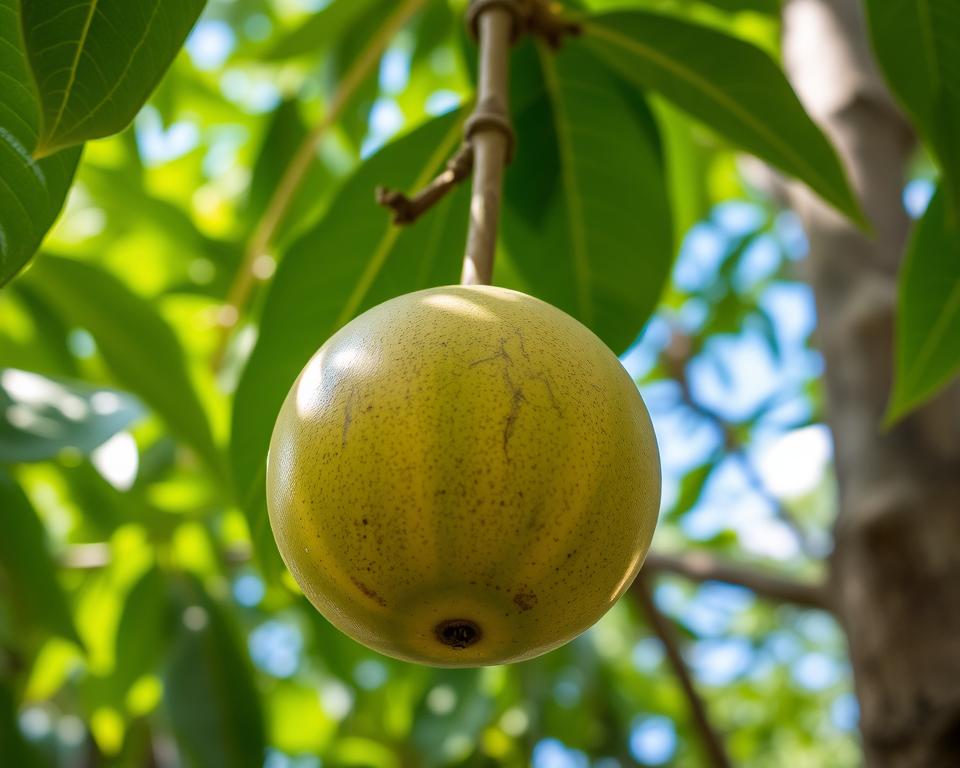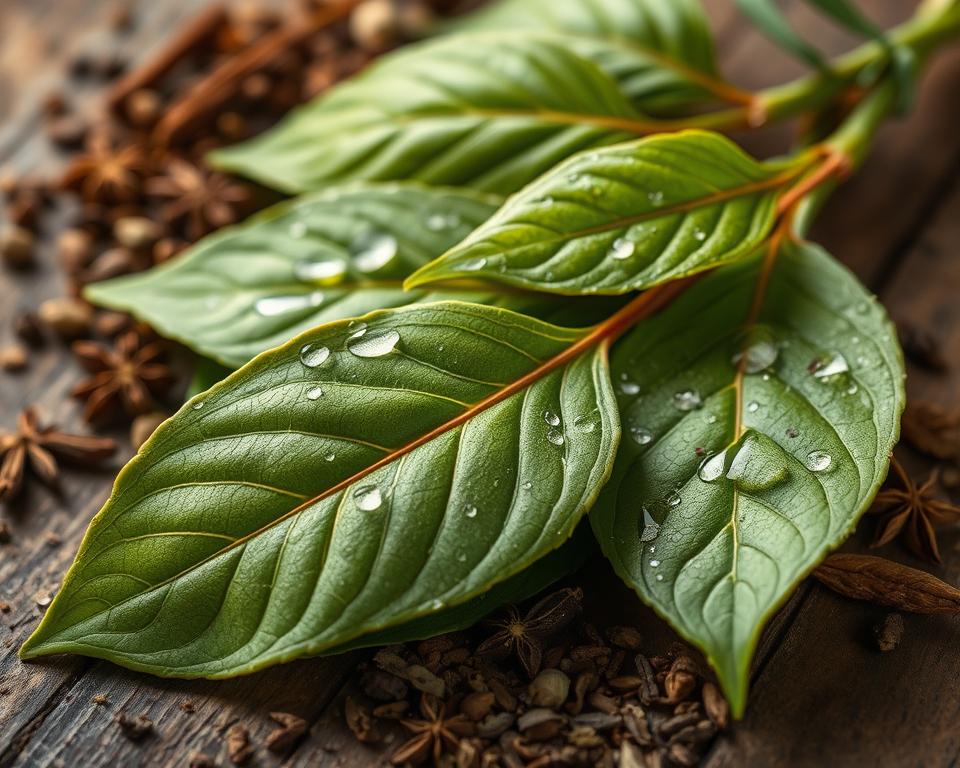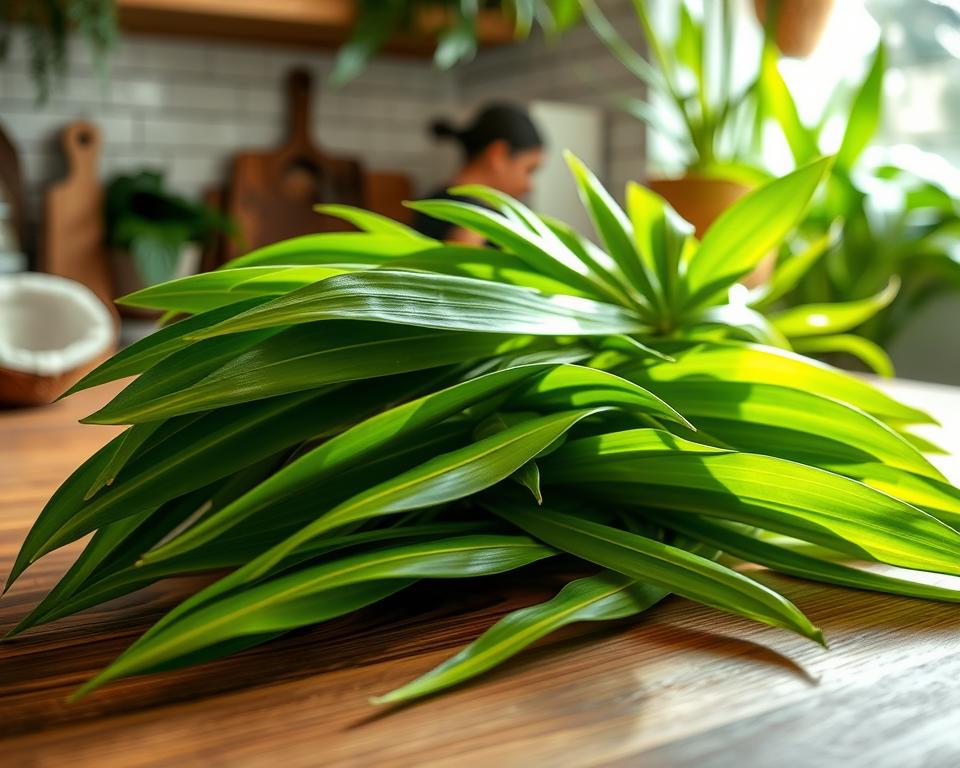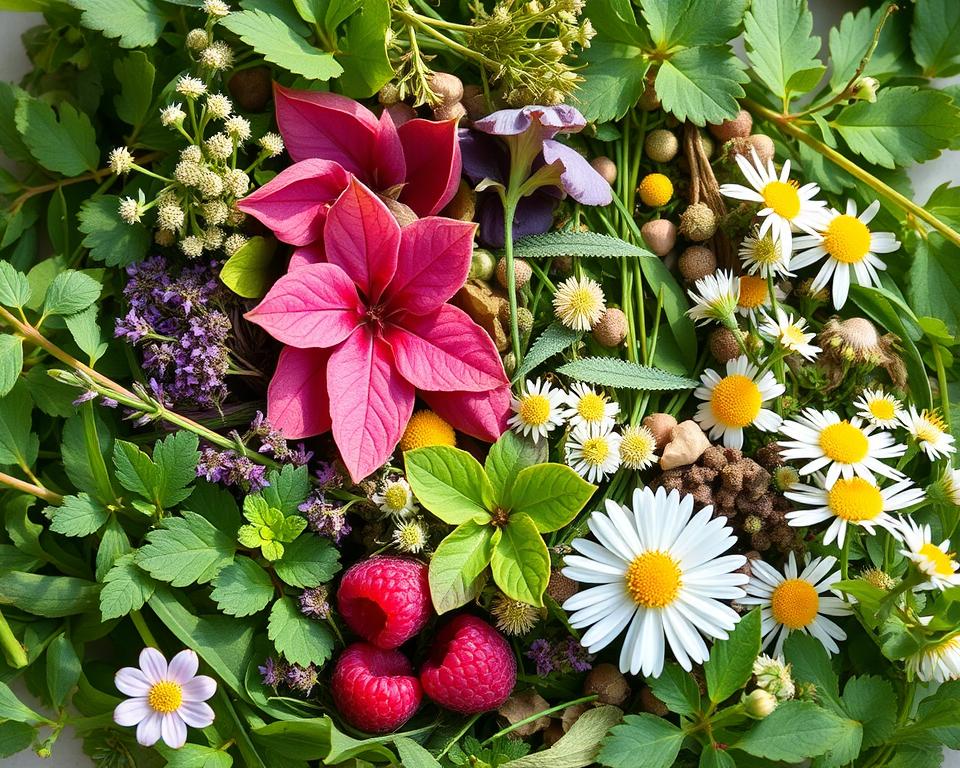The world of chili peppers is full of heat and flavor. Capsicum frutescens is a standout, known for its intense heat and unique taste. This article takes you into the exciting world of C. frutescens. We’ll explore its origins, global importance, and the famous varieties that have won over food lovers worldwide.
We’ll look at everything from the popular cayenne pepper to the bold bird’s eye chili. You’ll see how this versatile ingredient has become a staple in kitchens everywhere.
Read interesting things at : tosawakan
Key Takeaways
- Capsicum frutescens is a species of chili pepper renowned for its fiery heat and bold flavors.
- The article explores the origins, classification, and global significance of C. frutescens.
- Iconic C. frutescens varieties, such as cayenne pepper and bird’s eye chili, are highlighted.
- The article covers the culinary uses, health benefits, and cultural impact of C. frutescens peppers.
- Insights into the cultivation, handling, and storage of C. frutescens are provided.
Introduction to Capsicum frutescens
Capsicum frutescens, a type of chili pepper, has a long and colorful history. It started in Central and South America. Now, it’s a key ingredient in many cuisines around the world.
Origins and Classification
This pepper, also known as the bird’s eye chili or Thai chili, belongs to the nightshade family. It was first domesticated in Peru and Bolivia. It was crucial in the cooking of indigenous people.
Later, it spread across the Americas. Then, it reached other parts of the world through trade and exploration.
Significance in Global Cuisines
Capsicum frutescens is a key ingredient in many global dishes. It adds a bold flavor to foods from Southeast Asia to Latin America. Its unique taste and aroma have made it popular worldwide.
“The heat of capsicum frutescens peppers is not merely a culinary curiosity, but a cultural bridge that connects diverse culinary traditions across the globe.”
We will learn more about capsicum frutescens and its impact on food. We’ll see how it has become a favorite among chili lovers everywhere.
Cayenne Pepper: The Iconic Variety
Among the many Capsicum frutescens chili peppers, one stands out – the cayenne pepper. Known for its bold flavor and bright red color, it’s a key ingredient in many dishes worldwide.
From South and Central America, the cayenne pepper has become famous for its unique taste. It adds a spicy kick to many dishes, from Cajun and Creole food to Asian stir-fries and curries.
The cayenne pepper is loved for its mix of heat and flavor. It’s not just about being super spicy. Instead, it brings a complex taste that both chili lovers and food enthusiasts enjoy.
Used in powders, sauces, or fresh, the cayenne pepper has made a big impact on global cooking. Its bold nature and versatility have made it a staple in kitchens everywhere. It’s sure to keep wowing people for years to come.
Thai Chili Peppers: Fiery and Flavorful
Thai chili peppers are known for their unique mix of heat and flavor. They are small but pack a big punch in many Southeast Asian dishes. They add a special kick to curries, sauces, and marinades.
Bird’s Eye Chili
The bird’s eye chili, also called the Thai chili or siling labuyo, is a standout. Despite its small size, it brings a big flavor to dishes. It has a heat level of 50,000 to 100,000 Scoville heat units.
This heat is balanced by a fruity and smoky taste. This makes it a favorite among those who love spicy food.
Siling Labuyo
Siling labuyo is a close relative of the bird’s eye chili. It’s a staple in Philippine cuisine. These peppers are as hot as the bird’s eye chili but have a sweet touch.
They are used in many dishes like adobo, sinigang, and sisig. Whether added whole, sliced, or pureed, they bring a unique flavor.
Thai chili peppers are not just for cooking. They grow well in warm climates, making them great for gardeners. As people seek out bold flavors, these peppers remain popular. They are key players in the Capsicum frutescens world.
Tabasco Pepper: The Sauce Legend
The Tabasco pepper is a type of Capsicum frutescens. It’s known for the famous Tabasco sauce. This sauce has a rich history that has won over food lovers around the globe.
History and Production
In the 1860s, Edmund McIlhenny, a banker in Louisiana, started playing with peppers on Avery Island. He perfected a recipe and launched Tabasco sauce in 1868. It quickly became a hit in the U.S.
Today, Avery Island is still home to the Tabasco pepper. The McIlhenny Company makes the sauce there. They pick the peppers carefully, ferment them for up to three years, and mix them with quality vinegar. This creates the unique Tabasco taste.
| Year | Key Event |
|---|---|
| 1868 | Edmund McIlhenny introduces the first Tabasco sauce |
| 1889 | Tabasco sauce becomes a global sensation, with exports to Europe and Asia |
| 1922 | The McIlhenny Company is established to oversee the production and distribution of Tabasco sauce |
| Present day | Tabasco sauce remains a household staple, with the company producing over 700,000 bottles per day |
“Tabasco is the most powerful ingredient in the world. It’s the secret ingredient in almost every recipe.”
The story of the Tabasco pepper shows its lasting impact. It’s a true legend in the sauce and condiment world.
Capsicum frutescens: Heat Scales and Scoville Units
The capsicum frutescens pepper family is famous for its intense heat. This heat can be measured using the Scoville Heat Scale. This scale was created in 1912 by Wilbur Scoville, an American pharmacist. It helps us understand how spicy different chili peppers are.
The Scoville scale works by checking how much capsaicin is in a pepper. Capsaicin is what makes chili peppers hot. The more capsaicin, the spicier the pepper. Capsicum frutescens peppers, like Tabasco and Thai chili, can have up to 100,000 Scoville units. This makes them some of the hottest peppers in the world.
| Pepper Variety | Scoville Heat Units (SHU) |
|---|---|
| Tabasco Pepper | 2,500 – 5,000 SHU |
| Bird’s Eye Chili | 50,000 – 100,000 SHU |
| Siling Labuyo | 80,000 – 100,000 SHU |
Knowing about the Scoville scale is key to understanding capsicum frutescens peppers. It helps spice lovers and cautious eaters choose the right peppers. This way, you can enjoy the full flavor of these versatile chili peppers.
Culinary Uses of Capsicum frutescens Peppers
Capsicum frutescens peppers are known for their spicy and flavorful taste. They are used in many dishes around the world. These peppers add a unique heat and flavor that makes food special.
Spicy Sauces and Condiments
These peppers are often used to make spicy sauces and condiments. They are key in making Tabasco sauce and homemade hot sauces. They mix well with other ingredients to create tasty condiments that improve many dishes.
Curries and Stir-Fries
Capsicum frutescens peppers are a must-have in many curries and stir-fries. In Southeast Asia, peppers like the Thai Bird’s Eye Chili and Philippine Siling Labuyo are crucial. They add the right amount of heat and flavor to these dishes.
Their versatility lets them be used in both curries and stir-fries. This makes for vibrant and aromatic meals.
| Culinary Use | Capsicum frutescens Variety | Example Dish |
|---|---|---|
| Spicy Sauces and Condiments | Tabasco Pepper | Tabasco Sauce |
| Curries | Bird’s Eye Chili | Thai Red Curry |
| Stir-Fries | Siling Labuyo | Filipino Chicken Adobo |
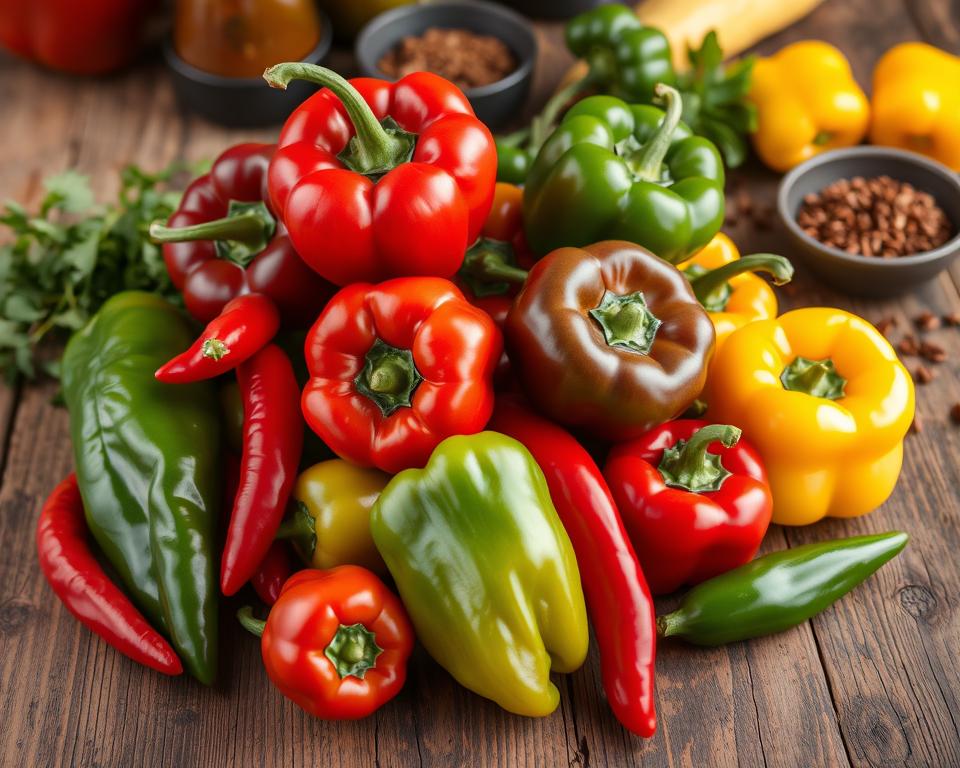
“The versatility of Capsicum frutescens peppers in the kitchen is truly remarkable. From adding zest to sauces to elevating the heat in curries, these peppers are a culinary powerhouse that can transform any dish.”
Growing Capsicum frutescens at Home
Growing your own Capsicum frutescens peppers, like cayenne or bird’s eye chili, is rewarding. It’s key to know the climate and soil needs for these spicy peppers.
Climate and Soil Requirements
Capsicum frutescens loves warm, sunny spots. It does best in temperatures between 70-85°F (21-29°C) and needs 6 hours of sunlight daily. It can handle some temperature changes but not frost or cold.
For soil, Capsicum frutescens likes well-draining, rich soil with a pH of 6.0 to 6.8. Adding compost or organic matter helps with nutrients. Avoid heavy clay soils that can cause root problems.
| Optimal Climate Conditions | Ideal Soil Requirements |
|---|---|
| Temperature: 70-85°F (21-29°C) | pH: 6.0 – 6.8 |
| Sunlight: 6+ hours per day | Soil Type: Well-draining, nutrient-rich |
| Humidity: Moderate | Soil Amendments: Compost, organic matter |
With the right climate and soil, gardeners can grow a lot of Capsicum frutescens peppers. This adds a tasty and versatile ingredient to meals.
Health Benefits of Capsicum frutescens
Capsicum frutescens peppers, also known as chili peppers, are more than just tasty. They are full of vitamins, minerals, and antioxidants that boost your health. These spicy peppers are great for your well-being.
One big health perk of Capsicum frutescens is its vitamin C content. Just a tablespoon gives you 10% of what you need daily. Vitamin C helps your immune system, keeps your skin healthy, and supports collagen production.
These peppers are also packed with vitamin A. Vitamin A is key for good vision, skin, and mucous membranes. Plus, they have carotenoids like capsanthin and capsorubin. These fight oxidative stress and lower the risk of chronic diseases.
| Nutrient | Amount per 100g | % Daily Value |
|---|---|---|
| Vitamin C | 143mg | 238% |
| Vitamin A | 4,649 IU | 93% |
| Capsaicin | 0.3-1.5% | N/A |
Capsicum frutescens peppers contain capsaicin, a compound studied for its health benefits. Capsaicin might help reduce inflammation, aiding those with arthritis or chronic pain. It could also boost metabolism and help with weight loss by increasing body heat.
If you want to spice up your meals or learn about Capsicum frutescens health perks, these peppers are worth trying.
Handling and Storing Capsicum frutescens Peppers
Working with Capsicum frutescens peppers requires careful handling and storage. These peppers are spicy and need special care to keep their heat and flavor.
Safely Handling Capsicum frutescens Peppers
Capsicum frutescens peppers, like cayenne and Thai chili peppers, are very hot. To handle them safely, do the following:
- Wear gloves to avoid direct skin contact with the peppers.
- Avoid touching your face, eyes, or any sensitive areas after handling the peppers.
- Thoroughly wash your hands and any utensils or surfaces that have come into contact with the peppers.
- Be careful when cutting or chopping the peppers to prevent the release of irritating oils.
Storing Capsicum frutescens Peppers for Freshness
Keeping Capsicum frutescens peppers fresh is important. Here are some tips:
- Store fresh peppers in the refrigerator, whole or sliced, in an airtight container or resealable bag.
- Freeze the peppers for longer storage to keep their heat and flavor.
- Keep dried Capsicum frutescens peppers, like dried cayenne or Thai chili, in a cool, dark, and dry place.
Follow these handling and storage tips to keep your Capsicum frutescens peppers tasty, manageable, and ready for your dishes.
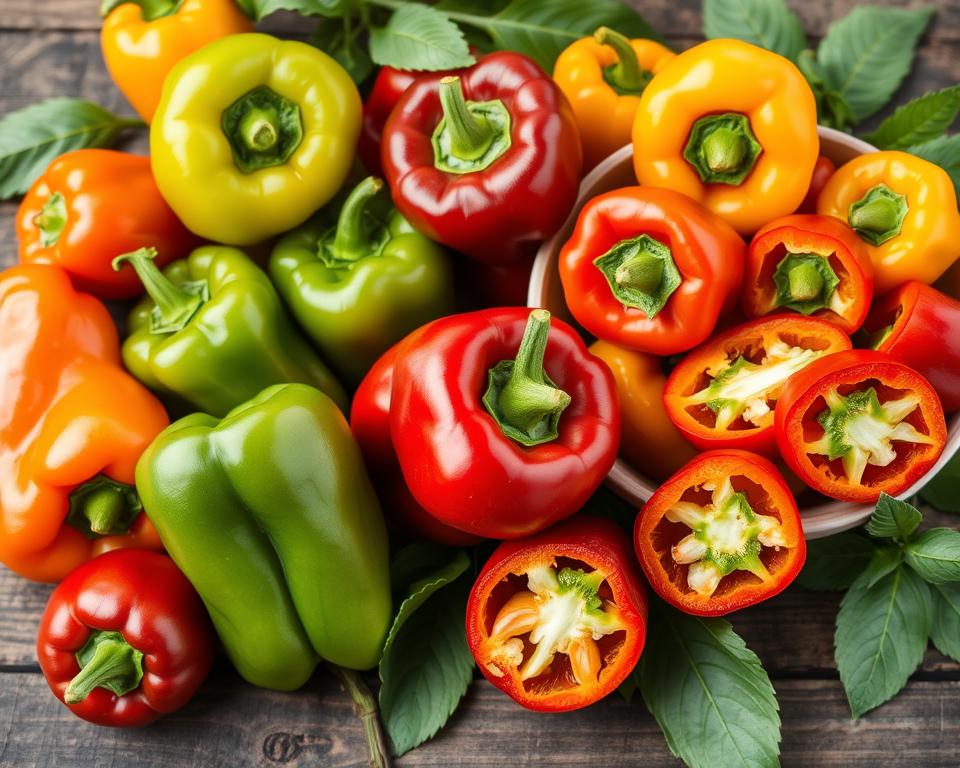
| Pepper Variety | Scoville Heat Units (SHU) | Recommended Handling | Ideal Storage Conditions |
|---|---|---|---|
| Cayenne Pepper | 30,000 – 50,000 SHU | Wear gloves, avoid contact with eyes and nose | Refrigerate fresh peppers, freeze for long-term storage |
| Thai Chili Pepper | 50,000 – 100,000 SHU | Wear gloves, exercise caution when chopping | Refrigerate fresh peppers, dry for long-term storage |
| Tabasco Pepper | 30,000 – 50,000 SHU | Wear gloves, avoid direct skin contact | Refrigerate fresh peppers, pickle or ferment for storage |
Capsicum frutescens in Traditional Medicine
Capsicum frutescens peppers are more than just for cooking. They have a long history in traditional medicine around the world. People have used them for their healing powers.
In Traditional Chinese Medicine, Capsicum frutescens, or the Tabasco pepper, helps with blood flow and eases joint pain. The pepper’s capsaicin is what makes it spicy. It’s also thought to reduce swelling and pain because of its anti-inflammatory effects.
“Capsicum frutescens has been used in traditional medicine for centuries, with its applications ranging from pain relief to improving digestion.”
In Ayurvedic medicine, Capsicum frutescens helps with breathing problems. It’s believed to help clear out mucus, which is good for people with asthma or bronchitis.
- In the Caribbean and Latin America, the Scotch Bonnet type of Capsicum frutescens is used for skin issues like rashes and burns.
- Indigenous people in Southeast Asia use Bird’s Eye Chili for stomach problems and to increase metabolism.
Research is showing that Capsicum frutescens could have more health benefits. These peppers are not just for cooking. They can help with pain, breathing, and more.
Regional Varieties of Capsicum frutescens
Capsicum frutescens, the chili pepper species, is loved worldwide for its ability to grow in many places. It’s found in the Caribbean, Latin America, and Southeast Asia. Each region has made this pepper its own, giving it special meanings in their food.
Caribbean and Latin American Varieties
In the Caribbean and Latin America, Capsicum frutescens has created many unique peppers. The Jamaican Scotch Bonnet is a small, round pepper with a sweet and spicy taste. Peru’s Aji Amarillo and Brazil’s Pimenta Malagueta also show how this pepper can be different in each place.
Southeast Asian Varieties
In Southeast Asia, Capsicum frutescens has found a new home. The Bird’s Eye Chili, also known as the Thai Chili, is small but packs a big punch. It’s used in many Thai and Vietnamese dishes. The Siling Labuyo of the Philippines has a unique, citrusy taste that adds flavor to local food.
The wide range of Capsicum frutescens varieties shows how well it can adapt to different places and tastes. Whether it’s the Caribbean’s Scotch Bonnet, Peru’s Aji Amarillo, or Thailand’s Bird’s Eye Chili, each type brings its own special flavor to local dishes.
Capsicum frutescens in Popular Culture
Capsicum frutescens, the spicy chili pepper, has moved beyond the kitchen into popular culture. It has inspired challenges, competitions, and art that grab people’s attention all over the globe.
The “Hot Pepper Eating Contest” is a big hit, where people eat the hottest capsicum frutescens peppers. These events are a big deal at food festivals and cultural events. They bring in crowds who love to see how far people can go with spicy food.
Capsicum frutescens has also made its way into media. Tabasco sauce, made from a type of capsicum frutescens, is well-known. It’s been a staple in kitchens for years. Its unique taste and bright red color are linked with spicy food. It’s even been featured in TV shows and movies.
Artists love capsicum frutescens too. They use these chili peppers in their work, creating everything from paintings to sculptures. These pieces show off the peppers’ bright colors and unique shapes.
In popular culture, capsicum frutescens keeps wowing people. It shows that these peppers are more than just food. They represent adventure, passion, and human creativity.
“The capsicum frutescens pepper is not just a spice – it’s a cultural icon that has captured the imagination of people around the world.”
Future of Capsicum frutescens Cultivation
The world’s love for the bold taste of Capsicum frutescens peppers is growing. This means big things are coming for how we grow them. Growers and scientists are finding new ways to make more peppers, make them stronger, and meet the growing demand.
New trends include using advanced greenhouses and hydroponics. These methods let farmers control things like temperature and nutrients. This means better crops and longer growing seasons. Also, using drones and smart watering systems helps use resources better and is good for the planet.
Scientists are looking into the genetics of capsicum frutescens to make better peppers. They want peppers that taste great, can handle more heat, and fight off diseases. This could lead to farming that’s good for the earth and meets new market needs.
| Emerging Trends in Capsicum frutescens Cultivation | Potential Benefits |
|---|---|
| Greenhouse and Hydroponics Systems | Consistent yields, extended growing seasons, reduced environmental impact |
| Precision Farming Technologies | Optimized resource utilization, improved sustainability |
| Genetic Improvement and Breeding | Enhanced flavor, heat tolerance, disease resistance |
The future of capsicum frutescens looks bright. New tech and methods will change how we grow, share, and enjoy these peppers. They’ll make sure these peppers stay a big part of our food.
Conclusion
As we wrap up our look at Capsicum frutescens, we’ve gained a deeper respect for this chili pepper. It has become a favorite in kitchens worldwide, thanks to its unique taste and heat. This pepper’s journey shows how flavor, innovation, and balance of heat and taste matter.
We’ve explored the many types of Capsicum frutescens, like the famous Cayenne pepper and the spicy Thai chili peppers. We also looked into the science of their heat and how they’re used in cooking. These peppers are key in many global dishes.
Looking ahead, Capsicum frutescens will likely bring more exciting flavors and health benefits. Whether you’re a pro chef or a gardening enthusiast, this pepper offers endless possibilities. It invites us to keep exploring and enjoying new tastes and experiences.
